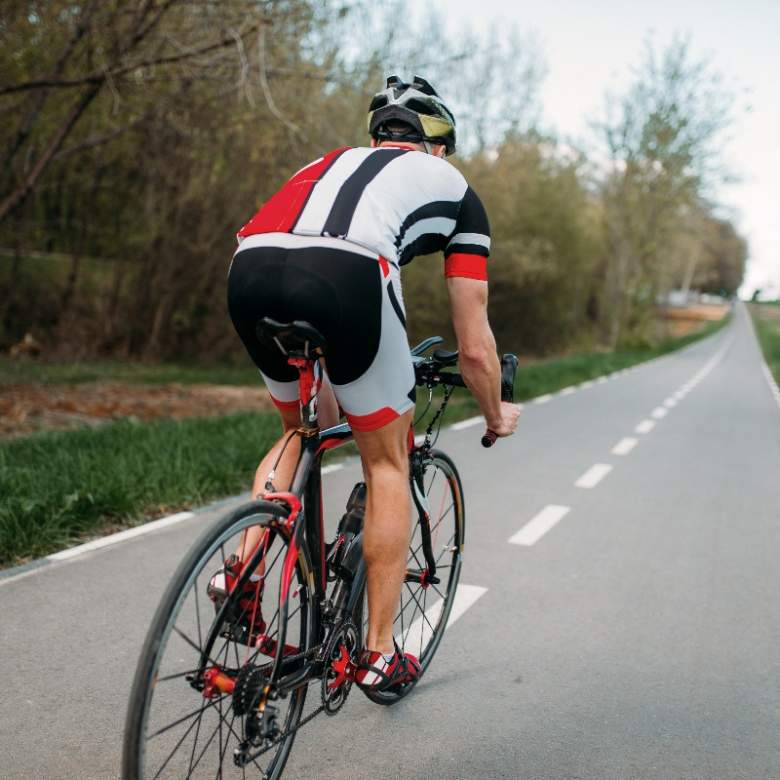
As a cyclist, I’m laser-focused on my cadence, especially during training rides. You can learn a lot about your current fitness levels, capabilities and areas that need some work. One accurate and inexpensive solution is a cadence sensor. This small, inexpensive gadget easily attaches to your bike and reveals how fast you’re moving the pedals.
Paired with a speed sensor, you’ll get valuable information that can improve your fitness and clarify your training goals. Browse our favorite speed and cadence sensors for indoor cycling and outdoor rides, even on your fat tire electric bike.
You can also boost your workout even more by pairing your cadence or speed sensor with a compatible GPS bike computer.
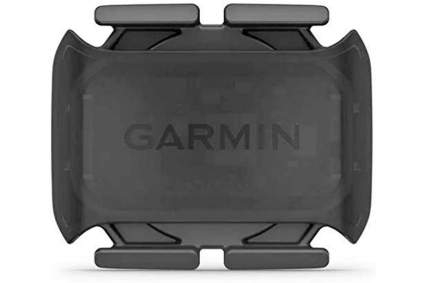
|
Amazon Customer Reviews
|
Price: $54.90 Shop at Amazon | Shop now Read our review |
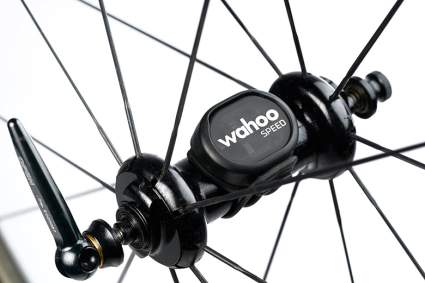
|
Amazon Customer Reviews
|
Price: $69.99 Shop at Amazon | Shop now Read our review |
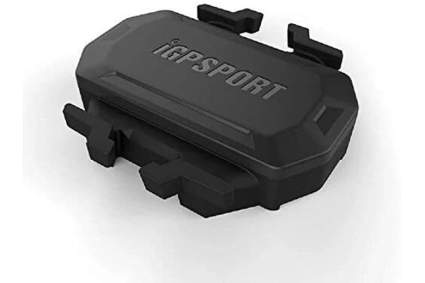
|
Amazon Customer Reviews
|
Price: $24.99 Shop at Amazon | Shop now Read our review |
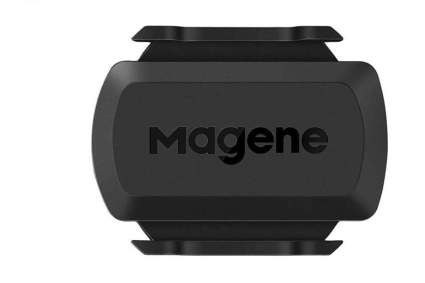
|
Amazon Customer Reviews
|
Price: $16.99 Shop at Amazon | Shop now Read our review |
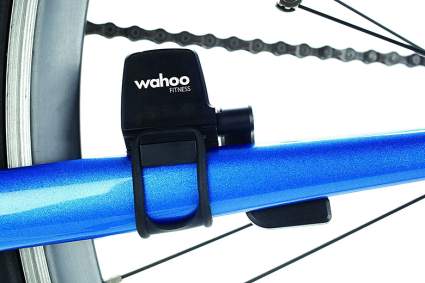
|
Amazon Customer Reviews
|
Price: $57.95 Shop at Amazon | Shop now Read our review |
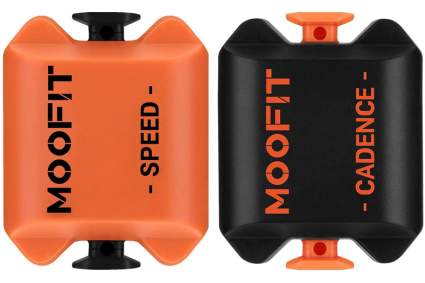
|
Amazon Customer Reviews
|
Price: $35.99 Shop at Amazon | Shop now Read our review |
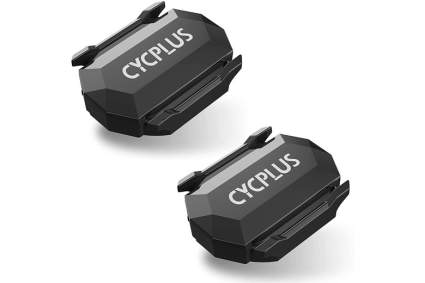
|
Amazon Customer Reviews
|
Price: $29.99 Shop at Amazon | Shop now Read our review |
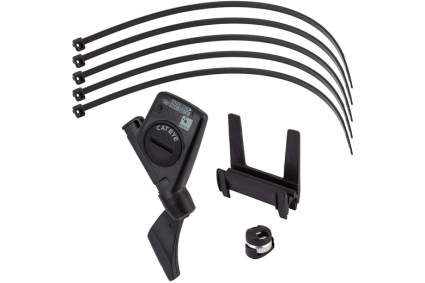
|
Amazon Customer Reviews
|
Price: $34.95 Shop at Amazon | Shop now Read our review |
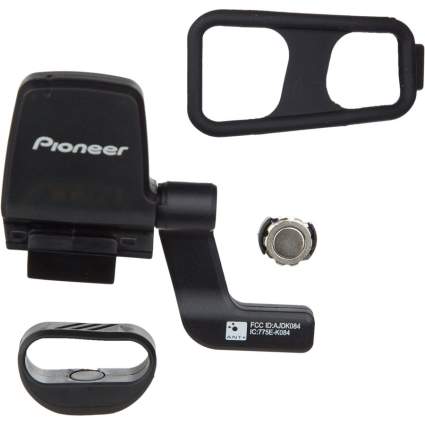
|
Amazon Customer Reviews
|
Price: $12.99 Shop at Amazon | Shop now Read our review |
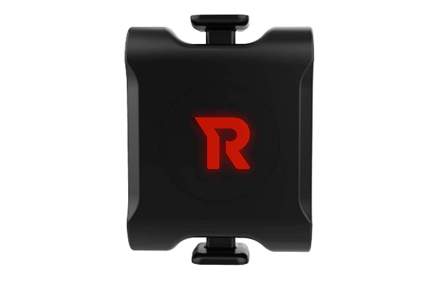
|
Amazon Customer Reviews
|
Price: $16.99 Shop at Amazon | Shop now Read our review |
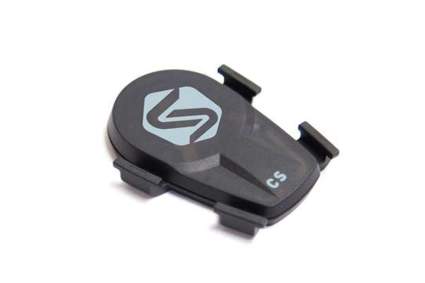
|
|
Price: $39.95 Shop now at Competitive Cyclist | Shop now Read our review |
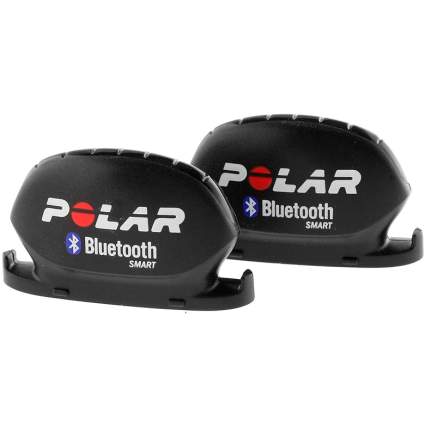
|
Amazon Customer Reviews
|
Price: $92.85 Shop at Amazon | Shop now Read our review |
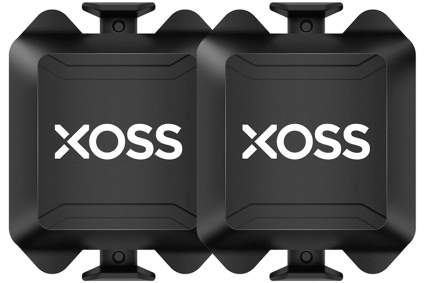
|
Amazon Customer Reviews
|
Price: $38.99 Shop at Amazon | Shop now Read our review |
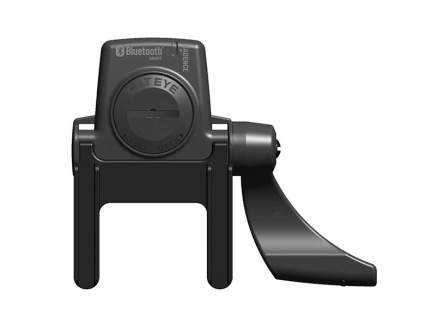
|
Amazon Customer Reviews
|
Price: $58.80 Shop at Amazon | Shop now Read our review |
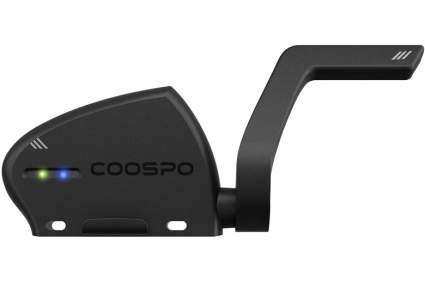
|
Amazon Customer Reviews
|
Price: $22.09 Shop at Amazon | Shop now Read our review |
-
1. EDITOR’S CHOICE: Garmin Speed 2 & Cadence 2 Bundle
Pros:- Both sensors are easy to install
- Sensors can be switched between bikes
- Speed sensor has an odometer
Cons:- Some complaints of connectivity issues
- Doesn't have universal device compatibility
- May interfere with power meters if installed on same wheel
If you’re looking for the best speed and cadence sensors for Zwift rides on your bike trainer, the Garmin Speed 2 & Cadence 2 Sensor duo accurately transmits data using ANT+ and Bluetooth Low Energy (BLE) technology. Set-up is also quick and simple, which is why this duo is our top pick.
Whether you’re riding indoors or outside, its affordable price tag and dependable results propel this second-generation Garmin speed and cadence sensor to the top of our list. The biggest change over the outgoing version is the inclusion of Bluetooth Smart technology, which makes connecting with your devices faster and easier.
The previous Garmin speed and cadence sensor only had ANT+ connectivity. ANT+ and Bluetooth Low Energy technology accurately transmit live speed, distance, and cadence data to compatible displays and apps.
The speed sensor has an odometer function to track your distance as you pedal. Each sensor is easy to install and can be easily switched between bikes. The wireless sensors also don’t have magnets.
The Garmin Speed 2 sensor (sold separately) attaches to the hub of either bike wheel. It also self-calibrates with your compatible Garmin device, including the Edge cycling computer. No head unit is required. The cadence sensor can be attached to crank arms of any size
-
2. RUNNER UP: Wahoo RPM Speed & Cadence Sensor
Pros:- Magnetless sensors for easy installation
- Works with iPhone, Android and bike computers
- Compatible with Zwift and many popular cycling apps
Cons:- Can be tough to install on non-traditional wheel hubs
- Readings can be slightly inaccurate at times
- Some riders complain of intermittent connectivity issues
Capture crucial data about your speed and cadence with the Wahoo RPM Speed & Cadence Sensor. Built with integrated Bluetooth and ANT+ technology, the sensors instantly track and transmit information to your compatible smartphone or bike computer. You can even use this speed and cadence sensor duo with your favorite training apps, including Zwift, Strava, RideWithGPS, MapMyRide and Wahoo Fitness.
Both the speed and cadence sensors come without magnets, which makes them easy to install. The speed sensor mounts onto the wheel hub, while the cadence sensor can be attached to the crank arm or shoe. Both mounts are included, giving you the flexibility to choose the best spot for the sensor.
The sensors connect wirelessly with Bluetooth 4.0 and ANT+ and will work with an iPhone, Android device, or bike computer. These sensors are also compatible with over 50 popular training apps, including Peloton (currently for iOS users). You can automatically upload your training data to your preferred platform after the ride.
This bundle includes the speed and cadence sensor, although you can purchase each sensor separately. All sensors are waterproof and offer a universal fit for your convenience. A replaceable coin cell battery powers each sensor up to a year.
-
3. iGPSPORT Speed or Cadence Sensor
Pros:- Magnet-free design easily switches between bikes
- Pairs with computers from Wahoo, Polar and Garmin
- Transmits data in popular training apps such as Runtastic, Zwift and Wahoo Fitness
Cons:- Not a dual-function sensor
- Battery installation can be tricky
- Lacks clear user instructions
The iGPSPORT Speed or Cadence Sensor is easy to install since it doesn’t require any magnets. You can also swap it between bikes to avoid losing precious workout data on your other bikes. The sensor effortlessly attaches to the bike’s crank arm and is held in place with two durable bands.
Equipped with ANT+ and Bluetooth technology, you can pair the sensor with a computer from well-known brands such as Polar, Wahoo and Garmin. The sensor also works with most mainstream training apps, including Wahoo Fitness, Zwift, Runtastic and more.
Used around an hour a day, the battery will last up to a year. You can safely ride in the snow and rain as this device has an IPX7 waterproof rating.
Find more iGPSPORT Speed or Cadence Sensor information and reviews here.
-
4. Magene S3+ Cycling Speed & Cadence Sensor
Pros:- ANT+ and Bluetooth 4.0 connectivity
- Doesn't require magnets for installation
- Expected battery life is 400 to 500 hours
Cons:- Doesn't track speed and cadence at the same time
- Switching modes requires reinstalling the battery
- Can be tough to use on a spin bike
Use the Magene S3+ with Zwift, Bkool, TACX, Garmin and other popular training apps. ANT+ and Bluetooth 4.0 connectivity ensure the Magene S3+ Cycling Speed & Cadence Sensor will work with compatible devices, including smartphones, bike computers and more. It can’t be connected to the rear wheel of a spin bike, though, which means it’s exclusively designed for use with your bike trainer.
You can use this Bluetooth cadence sensor to measure your speed or cadence, but you have to choose between one or the other. To switch modes, you’ll need to reinstall the battery.
When used as a speed sensor, the device mounts to your bike’s wheel hub. Alternatively, you can attach it to your bike’s crank arm to use as a cadence sensor. Magnets aren’t required for either installation method.
You can link to multiple devices at once, such as your bike computer and smartphone. As you ride, the sensor will record various data, so you can collect and share it after a ride.
In terms of battery life, you can expect up to 500 hours per battery. This speed and cadence sensor is also waterproof and dustproof to keep you riding even in inclement weather.
Find more Magene S3+ Cycling Speed & Cadence Sensor information and reviews here.
-
5. Best Speed & Cadence Sensor for Zwift: Wahoo Blue SC
Pros:- Universal fit for bikes
- Third party app compatibility
- Simultaneously measures speed and cadence
Cons:- Need to remove left pedal to mount on the crank arm
- Some say the sensor may move around on the spokes
- A few complain of slightly inaccurate speed measurements
The Wahoo Blue SC Speed and Cadence Sensor offers appealing features for cyclists of all levels, including real-time data transmission to phones and computers, Bluetooth and ANT+ connectivity and compatibility with many popular cycling platforms. Its dual-mode operation also makes the Wahoo Blue SC one of the best speed and cadence sensors for Zwift.
This speed and cadence sensor is slightly different than the Wahoo RPM cadence and speed sensors. The Blue SC is a single sensor that measures both speed and cadence in one, while the RPM bundle contains two separate sensors. Highlights include waterproof construction, replaceable battery and a universal fit for most bikes.
This bike speed and cadence sensor is compatible with a wide range of third-party apps, and has both Bluetooth Smart and ANT+ technology. Use it on your favorite routes outdoors or on the trainer. You can use it alongside a power meter for even more comprehensive insight into your training.
Find more Wahoo Blue SC Speed & Cadence Sensor information and reviews here.
-
6. MOOFIT Speed & Cadence Sensor
Pros:- Bluetooth 4.0 and ANT+ technology connects the sensors to most devices
- No need to switch between modes on a single sensor
- Easy installation that doesn't require magnets
Cons:- Can't choose between ANT+ and Bluetooth modes
- Instructions aren't very clear
- Rubber bands don't seem very durable
Get accurate real-time data as you ride with the MOOFIT Speed and Cadence Sensor. Connecting with devices such as your smartphone, indoor trainer and cycling apps is easy with Bluetooth 4.0 and ANT+ technology. With two separate sensors, you don’t need to worry about removing the battery to switch between modes.
This sensor duo is compatible with most popular fitness apps, including Peloton, Zwift, Rouvy and Ride with GPS. It also works with Wahoo, but you can only track speed or cadence at a time because of Wahoo’s restrictions. If you want to simultaneously track speed and cadence using your Wahoo app, consider the Wahoo RPM Cycling Speed and Cadence Sensor.
Installation is as simple as fastening the sensors to your bike’s crank or wheel hub. The cadence sensor attaches to the left crank, while the speed sensor mounts onto the wheel hub. No magnets are required.
As with most other speed and cadence sensors, this MOOFIT duo uses coin cell batteries. Each battery lasts up to 1 year with regular use. Both sensors are also waterproof and can be used in the rain.
Find more MOOFIT Speed & Cadence Sensor information and reviews here.
-
7. CYCPLUS Speed & Cadence Sensor C3
Pros:- Compatible with most bike head units
- ANT+ and Bluetooth connectivity makes it compatible with many devices
- Battery lasts up to 300 hours with regular use
Cons:- Can't be directly paired with Bluetooth
- Doesn't easily pair with the Strava app
- Rubber bands for installation aren't very durable
You can track your speed and cadence with the CYCPLUS Speed & Cadence Sensor C3 bundle. To alternate between the two modes, just remove the battery and toggle the switch to the appropriate position.
This cadence sensor duo is widely compatible with most devices, as it has Bluetooth and ANT+ connectivity. You can connect it with your smartphone, fitness watch and cycling apps to accurately record your data and track your progress.
It’s compatible with many head units, including the CYCPLUS GPS Bike Computer. Although you can’t pair it directly via Bluetooth, several cyclists report that it connects quickly with popular cycling apps, including Wahoo.
The CYCPLUS speed and cadence sensors easily attach to any bike with elastic and double-sided tape. You don’t need to worry about using magnets or calibrating the devices. Since the sensors mount to any wheel hub, they’re easy to switch between bikes for your convenience.
You don’t have to worry about recharging the device after each ride. Instead, a coin cell battery lasts up to 300 hours with regular use. Rainy days also aren’t an issue with this waterproof sensor.
Find more CYCPLUS Speed & Cadence Sensor C3 information and reviews here.
-
8. CatEye ANT+ Speed & Cadence Sensor
Pros:- Compatible with most ANT+ computers and devices
- Includes all the essential mounting hardware
- Works with most road and hybrid bikes
Cons:- Not designed for mountain bikes
- Lacks Bluetooth technology
- Pairing can be tricky
ANT+ connectivity ensures greater accuracy, which translates to an even better workout on the bike. The CatEye ANT+ Speed & Cadence Sensor is compatible with your favorite ANT+ cycling computers and devices, and will work on most road and hybrid bikes. All of the necessary mounting hardware is incldued, so you can quickly set up and go.
Find more CatEye ANT+ Speed & Cadence Sensor information and reviews here.
-
9. PIONEER ANT+ Speed & Cadence Sensor
Pros:- Sensors attach to the wheel and crank arm
- Sensors can be used separately
- Cadence sensor fits most crank arms
Cons:- No Bluetooth connectivity
- Prone to 2.4GHz network interference
- Not recommended for use in heavy, prolonged rain
The PIONEER ANT+ Speed & Cadence Sensor monitors both speed and cadence, so you can keep close tabs on your workouts. Additionally, ANT+ connectivity means instant feedback on compatible devices. You can pair the sensor with your smartphone, bike computer or another compatible device to get a better idea of your speed and cadence measurements when training.
To get both readings, simply mount the sensor onto your bike’s chainstay and attach the accompanying sensors to the wheel and crank arm. You won’t have to worry about skipping out on crucial data when riding in the rain, as this sensor is waterproof up to six meters.
Find more PIONEER ANT+ Speed & Cadence Sensor information and reviews here.
-
10. OPENRIDER R1 Speed & Cadence Sensor
Pros:- Flip a switch to alternate between speed and cadence
- Compatible with iOS and Android devices
- Transmits data to popular cycling apps such as Zwift, Garmin, Zwift and Wahoo
Cons:- Automatically enters sleep mode one minute after the bike stops
- May need to use a coin to flip the switch
- App can be glitchy
Instead of having to remove the battery to measure your speed or cadence, you simply have to flip a switch. The OPENRIDER R1 Speed & Cadence Sensor is a single sensor that displays your speed or cadence, but you can’t view both at the same time.
To see the data as you ride, simply pair this bike speed and cadence sensor to your iOS or Android device. Bluetooth 4.0 and ANT+ connectivity ensures the sensor will work with your compatible device or computer. You can also send the data to your favorite cycling app, whether it’s Garmin, Strava, Zwift, Wahoo or something else.
Don’t worry about getting this bike sensor wet if you’re caught in the rain, as it’s waterproof. If your sensor is stolen you can use the accompanying app to alert other riders in the area and track it down.
Find more OPENRIDER R1 Speed & Cadence Sensor information and reviews here.
-
11. Saris Magnetless Speed or Cadence Sensor
Price: $39.95Pros:- Dual-band Bluetooth Smart and ANT+ technology
- Easily attaches to front or rear crank or hub arm
- Water-resistant exterior
Cons:- Battery life isn't the best
- Only measures speed or cadence per session
- Some competitors are more accurate
If you’re the type of cyclist who prefers to spend time riding rather than installing gadgets, the Saris Magnetless Speed or Cadence Sensor is for you.
The sensor can be mounted on your bike’s front or rear hub or non-drive side crank arm for your convenience. Once it’s in place, you don’t need to install magnets to get crucial riding data. Another perk is its low-profile design, which not only means the magnet won’t get in the way as you ride, it also fits a wider range of bikes.
Dual-band Bluetooth Smart and ANT+ compatibility ensures connectivity with your compatible smartphones and other devices. You can program this sensor to measure cadence or speed, but it won’t measure both simultaneously.
This Bluetooth sensor requires a coin cell battery for operation. You can expect up to 200 hours of use per battery.
Find more Saris Magnetless Speed or Cadence Sensor information and reviews here.
-
12. Polar Bluetooth Smart Speed & Cadence Sensor
Pros:- Secure installation
- Compatible with iOS and Android devices
- Bluetooth low energy technology
Cons:- Batteries aren't replaceable
- Limited app compatibility
- Only works with select Polar bike computers
The Polar Speed & Cadence Sensor features low energy Bluetooth Smart technology. This set works with a variety of Polar products, including the V800 and V650. It’s also useful for iPhone and Android devices. Riders looking for sleeker sensors will appreciate the compact design of both the speed and cadence sensors.
Find more Polar Bluetooth Smart Cadence Sensor information and reviews here.
-
13. XOSS Cadence & Speed Sensor
Pros:- Coin cell battery is included
- No magnets required to install the sensor
- Works with a variety of Bluetooth-compatible sensors
Cons:- A bit bulky, especially for thinner crank arms
- Not the most accurate sensor on this list
- Some question the long-term durability
Low energy technology is one of the hallmark features of the XOSS Cadence & Speed Sensor. This affordable duo is outfitted with Bluetooth 4.0 technology for greater compatibility with your favorite products from Garmin, Bryton and other bike computers.
This combination speed and cadence sensor also supports Bluetooth and ANT+ connectivity. In case you’re not familiar, ANT+ is a common wireless technology used in many biking-related devices, including bike computers, cadence and speed sensors, and even bike trainers.
Switching between speed and cadence monitoring is as simple as reinstalling the battery. Each coin battery lasts about 400 hours. Don’t worry if it starts to rain when you’re out exploring your favorite roads or trails, as both sensors are waterproof.
Find more XOSS Cadence & Speed Sensor information and reviews here.
-
14. CatEye Bluetooth Speed & Cadence Sensor
Pros:- Wireless connectivity
- Easy to set up and install
- Designed for most road and hybrid tires
Cons:- Relatively limited app compatibility
- A handful of consumers experience issues connecting to cycling computers
- Signal may periodically drop
The CatEye Bluetooth Speed & Cadence Sensor works with Bluetooth Smart devices and computers. All the essential mounting hardware is included, making setup fast and easy. Additionally, it’s compatible with most road and hybrid tires. The sensors deliver high-level accuracy readings. You can use this sensor with most Bluetooth Smart devices.
Find more CatEye Bluetooth Speed & Cadence Sensor information and reviews here.
-
15. CooSpo Speed & Cadence Sensor
Pros:- Compatible with popular apps such as Zwift and MapMyRide
- Water-resistant exterior lets you ride in rain
- Tracks speed, cadence and distance
Cons:- Not a magnet-less design
- Some complaints of initial connectivity issues
- Zip ties make the set-up look bulky
Wirelessly track your speed, cadence and distance with this Bluetooth sensor. Bluetooth technology lets you connect with your smartphone and other compatible devices, such as GPS bike computers.
A waterproof exterior means you don’t have to worry about cutting your rides short when the weather turns foul. The sensor also features a shock-resistant design for rides on rougher surfaces. A built-in ANT+ receiver lets you use the cadence sensor with popular apps such as Zwift, MapMyRide, Cyclemeter and more.
Find more CooSpo Speed & Cadence Sensor information and reviews here.
What Is a Speed and Cadence Sensor?
Cadence sensors measure your rotations per minute, while speed sensors calculate how fast you're moving. These numbers depend on a variety of factors, including your effort-based speed and which gears you're using.
According to LiveScience.com, a sensor that only measures speed determines how fast you're moving by calculating the speed and trip distance based on the bike's wheel circumference.
Most sensors don't provide output at the same time. Instead, you'll typically need to swap the battery to activate your desired sensor if you have a two-in-one device. Otherwise, consider purchasing the sensors separately.
We're big fans of the Garmin Speed 2 & Cadence 2 Bundle, which includes both sensors and the necessary equipment to attach them to your bike. Measurements are fast and accurate, whether you're cruising or competing. ANT+ and BLE technology reliably transmit data to your Garmin Edge bike computer and other compatible devices.
Do You Need Speed and Cadence Sensors for Zwift?
If you own a smart bike trainer that automatically transmits this data, you probably don't need additional sensors for Zwift, unless you're concerned about accuracy. A compatible power meter also works.
Since Zwift relies on input from your bike to determine your speed as you ride, the answer to this question depends on your equipment.
The app supports all speed and/or cadence sensors that have ANT+ or Bluetooth Low Energy connections.
We've reviewed some of the best speed and cadence sensors for Zwift, including the Garmin Speed Sensor 2 and Cadence Sensor 2 and the Wahoo BlueSC. Both sensors transmit data using ANT+ and BLE technology.
Are Cadence Sensors worth It?
Even if you're not gearing up for a specific event, a cadence sensor can help you stay within the optimal range of 90 RPMs. A Bluetooth speed and cadence sensor can also seamlessly transmit data to your smartphone or cycling computer to help you monitor your efforts.
In cycling, cadence is measured as the number of pedal revolutions per minute. Many factors help determine your cadence, from gearing to effort and even your fitness level. Having the right cadence counter can make it easier to track and monitor your progress throughout the season.
If you're an experienced cyclist, you probably have a good understanding of the ideal cadence and speed you want to maintain during workouts and races. However, if you're just starting out, a bike cadence sensor can be a valuable tool to keep workouts consistent and track improvements. Many of the best indoor cycling bikes have this information built-in for easy access.
Options such as a Bluetooth cadence sensor, which wirelessly transmits data, or a device that simultaneously monitors speed and cadence, are appealing to both beginner and advanced riders.
Where Should I Place My Cadence Sensor?
Where you place your cadence sensor largely depends on the size and type of sensor. For example, some cadence sensors use a magnet to calculate your crank rotations, while others have a magnet-less design.
Most cadence sensors are designed to go on your bike's crank arm. However, the sensor should be placed where it won't interfere with the frame as the crank rotates.
Some sensors come with zip ties to securely attach to your bike, but you may use a strong double-sided adhesive to keep it in place. Some cadence sensors can also be mounted on your cycling shoe by clipping it to a strap or your shoestrings.
Can I Attach a Speed or Cadence Sensor to My Spin Bike?
You can attach a speed or cadence sensor on some spin bikes. Many newer models have built-in sensors to monitor your pedal strokes, but if yours doesn't, you can attach a sensor.
One of our top picks for spin bikes is the Wahoo cadence sensor. The first step is to mount it according to the manufacturer's guidelines. This is crucial to ensure it spins freely and provides accurate measurements.
You can secure the sensor in place using cable ties once it's properly positioned. However, you'll want to ensure the ties won't interfere with your pedal strokes.